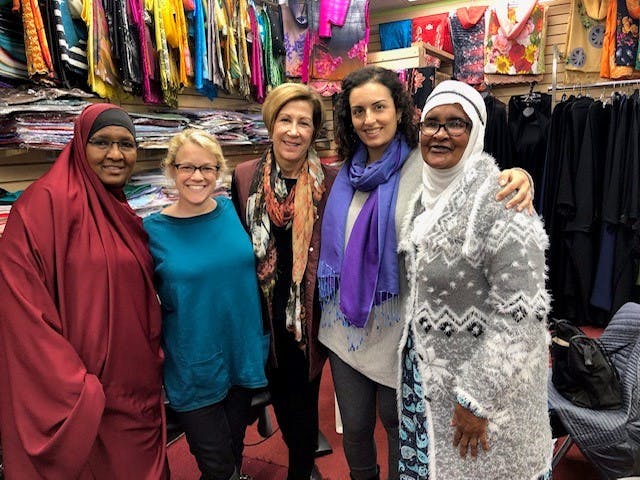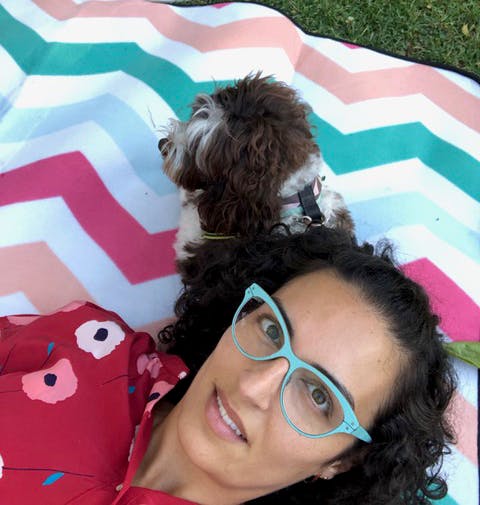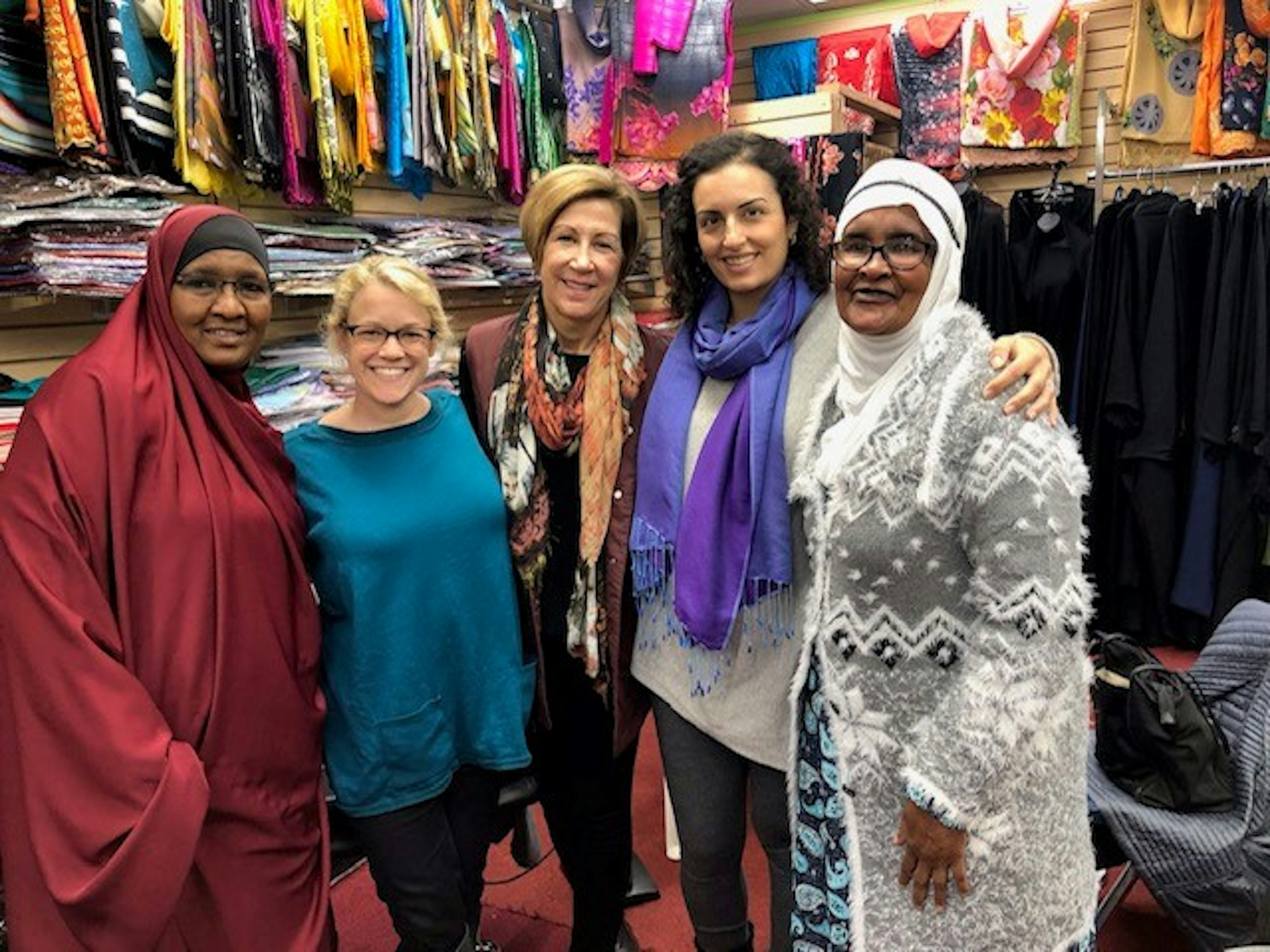Interview w/ Philanthropist Sabrina Merage Naim





We interviewed philanthropist Sabrina Merage Naim about supporting Black Cube’s first named fellowship, the Sabrina Merage Foundation Artist Fellowship, which will focus on artists exploring the expansive area of diversity and inclusivity.
Interview w/ Philanthropist Sabrina Merage Naim
Black Cube has recently announced its first named fellowship, the Sabrina Merage Foundation Artist Fellowship. This named fellowship will focus on an artist who is exploring in the expansive area of diversity and inclusivity, which is in line with Sabrina’s philanthropic work. In effort to introduce readers to our new fellowship and the support behind it, we interviewed Sabrina about her motivations for working in this field and how she hopes to support tolerance and acceptance of diversity.
Sabrina Merage Naim founded the Sabrina Merage Foundation in 2008 with the intention of sparking inclusivity and promoting tolerance between diverse cultures. Sabrina is the daughter of Black Cube’s Founder, Laura Merage, and is the founder of Echo Capital Group (ECHO)—a venture capital firm focused on early-stage investments in consumer product companies founded by young, driven entrepreneurs who are developing concepts for the Millennial demographic. In addition, Sabrina is the Vice President of Corporate Strategy at Consolidated Investment Group (CIG), her family office investment firm which invests across numerous asset classes, including real estate, private equity, public equity and funds.
Black Cube: We would love to introduce our audience to the Sabrina Merage Foundation, and the work your foundation does. Can you share a bit about your philanthropic vision to support diversity and inclusivity? How did you come to focus your work on this intersection?
Sabrina Merage-Naim: 12 years ago, I was a recent college graduate coming into the workforce at the onset of the Great Recession. At school, I had experienced the dichotomy of the incredible open-mindedness of being on a college campus juxtaposed by numerous instances of bigotry and racism that same year. Swastikas were graffitied on the walls of dormitories, racist slurs were being hurled at black students, and more. This was not unique to my school at the time and unfortunately, these instances on college campuses around the country have not slowed since. I knew I wanted to do something to have a positive impact on the world and was often inspired by my parents’ philanthropy, but I didn’t have a clear direction until I saw this imbalance at the educational institutions that are meant to infuse us with knowledge, empathy, and camaraderie. I made it my mission to seek out organizations, individuals, and movements that sought to bridge the divides between people. Fast forward to today and I have had the privilege of partnering with true change-makers, innovative grassroots campaigns, films, organizations, and more. Today, messages of inclusivity are more needed than ever. Whether we see these divides widening in political dialogue, social rhetoric, or otherwise, it is beholden to the members of society who can make their voices heard, to do so for the benefit of all. The Sabrina Merage Foundation has seen some incredible movement in the work that we support through our partners and we will continue to do so for as long as these conversations need to happen.
BC: What an intense experience it must have been for you, and other students, to see those acts of racism occur on your University campus. We are all lucky that you saw that as a call to action. Even today, we are still in a moment of extremes – expanding political divides, growing social inequalities, severe weather events, false information, and the rise of hate groups. I’d like to unpack what inclusivity means to you because it can mean so many different things. Does inclusivity mean acceptance of all beliefs? What do you envision when you think of a strong and clearly defined example of inclusivity? Are there any organizations that exemplify these values to you?
SMN: I believe we will all thrive when we begin to appreciate the beauty in our differences. That doesn’t mean acceptance of ALL beliefs because there are many belief systems that exist to oppress others. Those belief systems that think themselves to be superior or more worthy of others or who create rhetoric or actions that harm others, need not apply. And in fact, those individuals that subscribe to these extremist and harmful groups or movements are exactly the ones we aim to reach. We aim to bring people back to a point of balance and moderation where we are all better equipped to dismiss the false news, the extremist views, and the social inequities. To take it a step further, once individuals are equipped to protect themselves and their families from extremism and bigotry, we seek to embolden allies to be ambassadors for change and provide them with the tools they need to have productive and meaningful conversations. We’ve seen this work achieve successes in numerous formats ranging from documentaries to schools to community theater. At the simplest level, allowing more space for empathy, education, and open dialogue in a variety of settings and ways is what we aim to achieve.
BC: Building off of this, how do you think the Coronavirus and its affectual situations (e.g. social isolation and economic turmoil) impact the conversation of inclusivity and equality? Do you see any new ways of promoting equality emerging or developing while in quarantine?
SMN: Two important pieces that have arisen during this global pandemic. The first is the realization and acceptance that this virus could negatively impact any person on this planet regardless of race, religion, ethnicity, etc. This realization has, in some ways, acted as an invisible link that has brought us together. There’s very much a feeling of “we’re in this together”. We have seen a number of uplifting stories of virtual community bonding, the heroism of our frontline workers, selfless acts to benefit strangers, and so much more. During this difficult time, we truly see how communities break down barriers to bond and rise up together. The second item has to be the acknowledgment that although this virus doesn’t discriminate on the basis of race or religion per se, it does discriminate in other ways vis a vis our elderly populations, low-income communities, those with mental health issues, the prison system, and beyond. It is beholden upon us to open our eyes to the difficult positions that people are in outside of our immediate circles and have those conversations and take action where we can. There are those who do not have the luxury of adhering to shelter-in-place laws. They need to work— and provide for their families— in whatever way they can. Those individuals with mental health issues who are in isolation are at high risk and need to feel a connection with community members. The economic turmoil is and will continue to disproportionately impact lower-income communities who have lost jobs, wages, and don’t necessarily have savings to ride out the storm. It is naive to say that this virus is non-discriminating as a blanket statement. We need to open our eyes to the many experiences of others. This is true during the time of COVID-19 and it is true at every other time in history.
BC: Given your commitment to uprooting the underlying causes of inequality, what excites you most about supporting site-specific art and artists’ civic role?
SMN: I have seen first-hand how art moves, inspires, awes, and brings people together. We communicate through art, express through art, educate through art, connect through art. Art is boundless and, in my experience, one of the most effective ways to create dialogue of sometimes sensitive or controversial issues. Black Cube has a unique ability to amplify the voices and expressions of artists who otherwise may not have the means to bring their installations to public spaces in this way. There is a civic engagement that happens when the public is exposed to site-specific art through Black Cube that I have yet to see mirrored anywhere else. I believe that most people crave the experiences and conversations that Black Cube art instigates but are often held back by the sometimes intimidating experience of the “white cube” gallery. Black Cube artists are able to bring the conversation to the public where they exist and in a palatable and intriguing way. With this setting and foundation, we are able to capitalize on the complex conversations that we need to be having in order to positively progress as a society.
